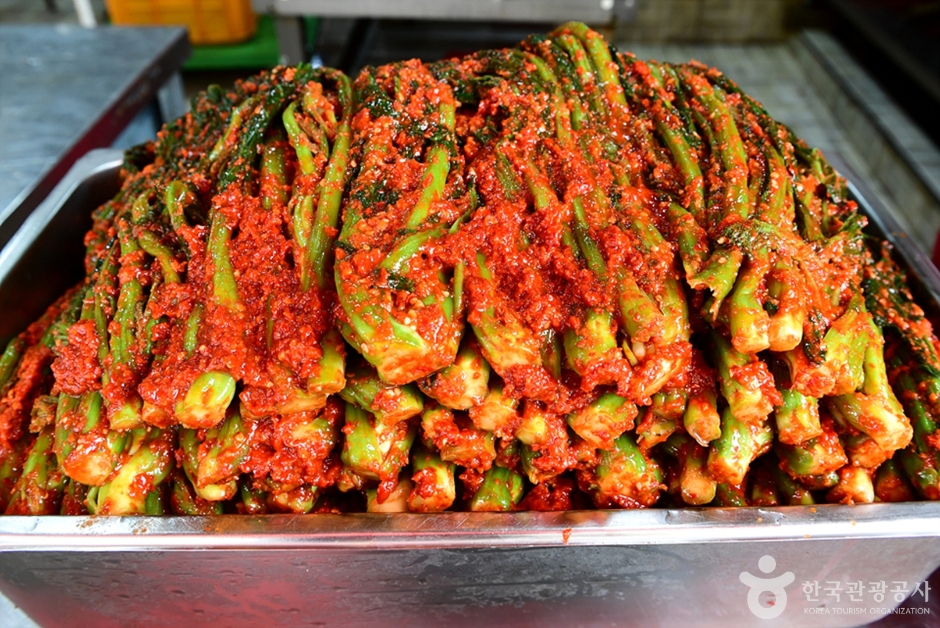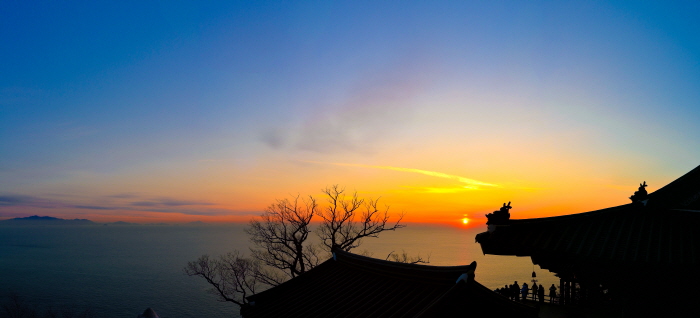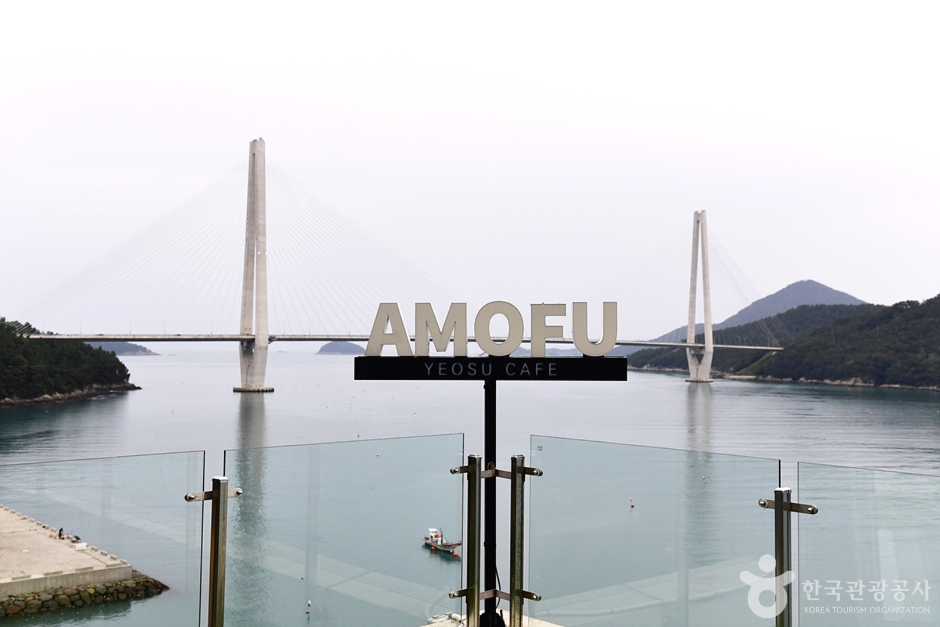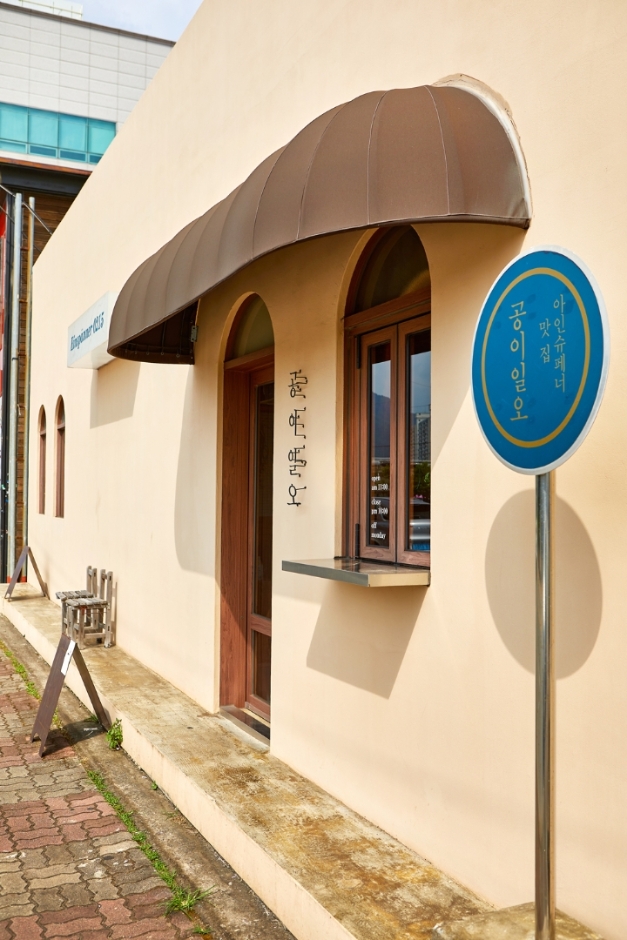Yongmunsa Temple (Namhae) (용문사(남해))
16.2Km 2024-02-23
166-11 Yongmunsa-gil, Idong-myeon, Namhae-gun, Gyeongsangnam-do
Yongmunsa Temple, located on Hogusan Mountain in Namhae, was established in 802. It derived its name from being built above a pond where a dragon was believed to reside. The temple provides a temple stay program, allowing visitors to immerse themselves in tranquility for both body and mind. Renowned as a picturesque destination for autumn foliage, it attracts a multitude of tourists during the fall season.
Nodo Island (Kim Manjung Historic Site) (노도(김만중유허지))
17.5Km 2024-02-23
1-1 Nodo-gil, Sangju-myeon, Namhae-gun, Gyeongsangnam-do
Nodo Island, where Kim Manjung, a scholar-official during the Joseon dynasty, spent three years in exile amid factional conflicts, preserves the remnants of his thatched house, a memorial stone, and a well. The island stands as a testament to its historical significance. Named "Nodo" for its historical association with the production of numerous oars, it is also known as Satgatseom Island, named for its resemblance to a Satgat. Blending captivating natural scenery with Kim Manjung's literary legacy, the island features the Seopo Literature Museum, a Folk Museum, and an Ecological Pond.
Kim Miyoung Dolsan Gatkimchi (김미영 돌산갓김치)
18.3Km 2024-02-21
57 Hyangiram-ro, Dolsan-eup, Yeosu-si, Jeollanam-do
Kim Miyoung Dolsan Gatkimchi is a specialty packaging store located below Hyangiram Temple in Geumosan Mountain. When you order Dolsan gatkimchi (Dolsan leaf mustard kimchi), they mix the leaf mustard and pre-marinated seasoning on the spot before packaging. Dolsan leaf mustard, a specialty of Yeosu, grows in the warm marine climate with rich soil and sea breeze, resulting in its tender leaves and distinctive flavor.
Yeosu Hyangiram Sunrise Festival (여수 향일암일출제)
18.3Km 2025-11-25
60 Hyangiram-ro, Dolsan-eup, Yeosu-si, Jeollanam-do
+82-61-659-4743
Hyangiram Sunrise Festival is an annual overnight festival that begins on New Year's Eve. It takes place at the historic Hyangiram Hermitage, which was built in the year 644. As the New Year's Day dawns, visitors can witness the sun rise above the horizon from Hyangiram, which literally means "a hermitage facing the sun."
Yeosu Hyangiram Hermitage (향일암(여수))
18.5Km 2024-12-23
60 Hyangiram-ro, Yeosu-si, Jeollanam-do
Hyangiram Hermitage (Cultural Property Material) is one of four Buddhist hermitages in Korea where the faithful come to pray to the Avalokitesvara Bodhisattva. It was originally named Wontongam Hermitage, established by Monk Wonhyo during the fourth year of Baekje King Uija’s reign (644). Wontongam Hermiatge was renamed to Geumoam Hermitage by Monk Yunpil in the 9th year of Goryeo King Gwangjong’s reign (958), then renamed once again to Hyangiram Hermitage by Monk Inmuk during the 41st year of Joseon King Sukjong’s reign (1715).
The temple contains many buildings both preserved and rebuilt, including the main hall, Daeungjeon Hall, which was rebuilt in 2012 after it burned down in a fire. The mountain path to Hyangiram Hermitage is very steep, but many people make the climb in hopes of their wish coming true. Legend has it that anyone who passes all seven of the stone caves on the walk to Hyangiram Hermitage will be granted their wish.
AMOFU (아모푸)
19.7Km 2024-02-20
43 Hwaseo-ro, Hwayang-myeon, Yeosu-si, Jeollanam-do
Amoofu is a large café located near Hwayangdaegyo Bridge, connecting Yeosu and Goheung. It specializes in specialty coffee, allowing customers to choose their beans according to their preferences, with the flavorful longblack being a signature menu item. The first floor features a spacious outdoor terrace, the second floor offers large windows overlooking the sea, and the third floor has a rooftop where visitors can relax while enjoying the beautiful view of Namhae sea.
Café Gongiiro (공이일오)
20.0Km 2024-02-01
144 Hangman 9-ro, Gwangyang-si, Jeollanam-do
Café Gongiiro, with its distinctive one-story design and alluring beige finish, instantly captivates the eye. Upon entering, the comforting embrace of wooden interiors welcomes its visitors. Their signature menu is Almond Cream Latte. Picture a lush creamy layer that covers a latte, infused with fine almond granules, enriching its savory essence. The combination of the sweet cream and the deep flavor ensures an unforgettable experience with every sip. For green tea enthusiasts, the Creamy Matcha Latte is irresistible, delivering the genuine matcha flavor topped off with a rich cream. For those who prefer to stick to traditional flavors with a creamy twist, opt for the Cream Coffee, which pairs strong black coffee with a smooth and sweet cream layer. For those eager to try something different, the Chodang Corn Coffee offers a captivating blend, combining the distinctness of corn cream with the classic café latte. True to its essence, this café prides itself on presenting coffee drink that are luxuriously crowned with thick, indulgent cream, ensuring a delightful experience with every cup.





 English
English
 한국어
한국어 日本語
日本語 中文(简体)
中文(简体) Deutsch
Deutsch Français
Français Español
Español Русский
Русский